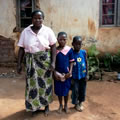Where?
HOW CAN WE HELP YOU?
Starting a project in a new context, country or region? Where – gives you access to MFO’s select publications showcasing region specific approaches to research, financial capability development or results analysis.
Not finding what you are looking for? Click here.
East Africa
MFO has done much work in East Africa, including developing financial education programs relating to micro-insurance, conducting large consumer research projects using innovative methods, and measuring the impact of different financial services.

Southern Africa
In Southern Africa, MFO has conducted research on the financial capabilities of citizens in the area as well as looking at micro-insurance in the area.
- Microinsurance Client Satisfaction Study Zambia
- Malawi's Financial Landscape: Where Does Opportunity International Bank of Malawi Fit?
- Microfinance and Gender: Some Findings from the Financial Diaries in Malawi
- Branchless Banking and Rural Outreach in Malawi: Opportunity International Bank of Malawi's Impact on the Market

Middle East and Northern Africa (MENA)
In the Middle East and North Africa, MFO has done work in the past analyzing micro-insurance policies in the West Bank. Additionally, studies in the Middle East were used to help construct important documents concerning how MFO performs market research on and assesses the outcomes of financial education.

South Asia
Apart from developing a wide range of financial education programs for different areas in the region, MFO also has past experiences working with micro-insurance in the area, assessing challenges that face it and its effectiveness at covering the poor.
- Can Financial Education Change Behavior? Lessons from Bolivia and Sri Lanka
- Assessing the Outcomes of Financial Education
- The Demand for Microinsurance in Pakistan
- Early Warning Signs: The Role of Geographic and Marketing Challenges in the AKAM Microinsurance Experience
- Can Health Microinsurance Protect the Poor?

Central Asia
In the past, MFO has worked on promoting financial education for adolescent girls and women in Central Asia. After working to promote this education, we additionally performed impact assessment studies to determine how effective our efforts were at empowering these individuals.







